Log In
View Upcoming Events
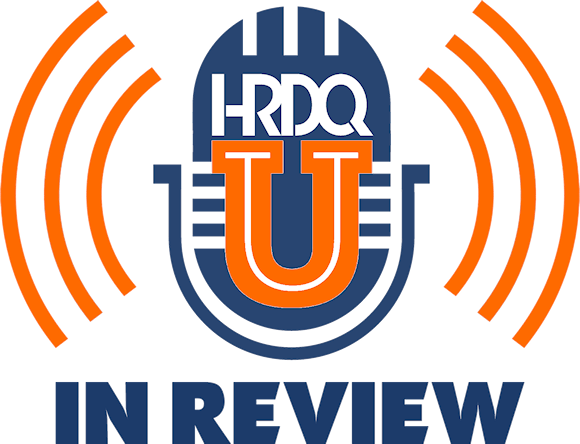
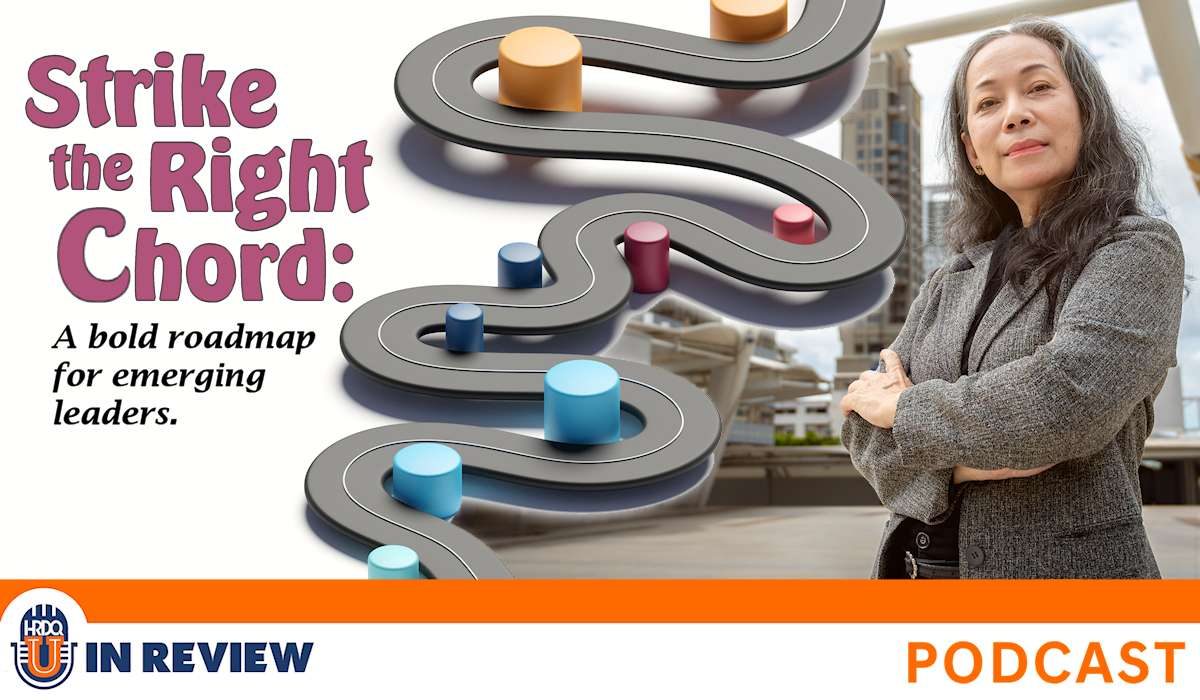
Host Sarah welcomes leadership expert and musician Michael Brenner to explore the CHORDS Model™, a bold and innovative roadmap designed specifically for the emerging leader. Drawing inspiration from his background in music, Dr. Brenner brings a fresh, creative perspective to leadership development, demonstrating how musical principles like harmony and rhythm can offer powerful insights into team dynamics, communication, and organizational success.
Together, Sarah and Dr. Brenner dive into each element of the CHORDS Model™, uncovering how leaders can build stronger, more connected teams by learning to listen deeply, stay in sync, and lead with intention. Whether you’re an emerging leader or someone who supports leadership growth, this episode offers practical takeaways and a whole new way to think about leadership through the lens of music.
Chapters:
⏱️ 00:00 Introduction – Welcome to the HRDQ-U In-Review Podcast
⏱️ 00:47 Meet Michael Brenner – Musical roots, leadership expertise, and the birth of CHORDS
⏱️ 01:25 What Is the CHORDS Model™? – Breaking down the six notes: Communication, Harmony, Ownership, Respect, Direction, and Support
⏱️ 03:32 Context in Communication – How clarity and tone shift with the environment
⏱️ 05:00 Leadership in the Age of AI – Adapting human-centered leadership for a tech-driven world
⏱️ 07:14 Practical Applications for Leaders – Spotting a “team out of tune” and realigning effectively
⏱️ 09:20 Key Takeaways from the Webinar – Audience reactions and lessons learned
Action Items:
Watch the full webinar replay – Strike the Right CHORD: A Bold Roadmap for Emerging Leaders
Explore the CHORDS Model™ to enhance your leadership practice
Start small – Implement just one “note” this week in your leadership style
Share this episode with an emerging leader in your network
00:01
Welcome to this week’s episode of the HRDQ-U In Review podcast, where we bring you the latest insights and practical tools for enhancing soft skills training in your organization. This podcast is brought to you by HRDQU.com, and I’m your host, Sarah, Learning Events Manager here at HRDQ-U. And today we are joined by Michael Brenner to discuss the webinar, Strike the Right Chord: A Bold Roadmap for Emerging Leaders.
00:25
Now, before we dive in here, I want to make sure that you’re you subscribe to our newsletter at HRDQU.com if you have yet already. So you can get exclusive updates, upcoming webinars and resources to help you and your team excel. And with that, Mike, thanks for joining me today. Let’s get into it. Yeah, my pleasure, Sarah. Nice to be with you. So for those that didn’t attend the webinar and just kind of a refresher, Mike, could you share a little bit about your background as both a leadership expert
00:54
and a musician? Sure. So, I’ve been in the learning and development space now as a consultant, a facilitator, a coach, an educator for about 25 years. In addition to that, I’ve been a musician for about 45 years and playing professionally since I was a teenager. So, whatever many years that was, many, many years.
01:21
And so what I’ve done as part of my business is to of sort of combine those two passions, my background and experience as a musician and my background and expertise in learning and development and created my business called Right Chord Leadership. It is really so great to see that you were able to combine those two passions and
01:44
You recently presented this webinar at HRDQ, you strike the right chord, a bold roadmap for emerging leaders. And it was a really awesome experience because you intertwined music throughout and you were able to just really, your passion bled through in the event. we had some really great comments come through from our audience as well. And I just, pulled a few because I just thought we needed to share them. had Joy S saying, thank you. This was one of the best webinars I’ve ever attended.
02:13
from Barbara saying, fantastic and creative webinar. Thanks, Michael. And another one here from Dwayne. This was a very engaging webinar. The presenter shared in a way that was entertaining and full of great information. I thought these were really important to share off with our audience today because if they haven’t had the option or the opportunity to tune into the webinar and watch the webinar, I really recommend that you watch the recording because.
02:38
It was such a fun experience over there. So we’ll have all of that information linked to below. Thank you, Sue, for sharing that. That’s very gratifying. Thank you. Yeah, it was really great. It was such a fun session. And I would love, if you could share what the key takeaways were for our registrants at this event for those that didn’t get to listen to the webinar yet, just so they can, everybody can be on the same page and we can catch people up to speed. Sure. So.
03:06
To make a long story much shorter, a few years ago I developed a model called the Chords Model, C-H-O-R-D-S. And the premise there is that each letter in the word chords is a note, if you will, that all high performing leaders and all high performing teams play. And that’s based on my experience, 25 years of experience and everything that I’ve read and learned in that time.
03:34
And the notes, and these aren’t the only notes that sort of lead to success, but there are six important ones. Communication, harmony, ownership, respect, direction, and support. And I felt so strongly about the validity of the chords model that I wrote a book about it. And the book just came out like within a day or two ago.
04:02
And the book is a deep dive into each of the six notes and goes into some degree of depth in terms of what the note is, why it’s important, and how leaders and managers can ensure that their teams are playing those notes. And that, in a nutshell, is what the webinar the other day was all about. And we had some really great questions come through from the audience that I want to discuss today. The first one here being, how does context
04:31
play a role in communication, especially when it comes to clarity? Yeah, great question. So I’ve taught communication courses, both undergraduate and graduate. I’ve done many, many interpersonal communication programs for clients. And despite all the technology that’s available to us that’s to facilitate communication, it is something that we still tend to struggle with or get challenged by.
04:58
I context plays a critical role in communication because it really frames the meaning behind our words and our tone and our body language. So in other words, the same message can be interpreted very differently depending on the setting or the relationship between the people involved or the cultural norms or even the timing. So for example, a direct statement in a high stress meeting may feel confrontational whereas the same statement
05:25
in a more casual setting might come across as honest and helpful. So context is really key. When context is ignored or misunderstood, it can lead to confusion and conflict. And that’s why I say that clarity isn’t just about choosing the right words. It’s about ensuring your words land in the way that makes sense for your intended audience for the moment and for the environment. This is something effective communicators understand.
05:54
they’re always aware of the context in which they’re communicating and they adjust accordingly so that their message isn’t just heard, but truly understood. Absolutely. And then Mike, in the age of AI, how can emerging leaders adopt the Coords model effectively?
06:14
Yeah. So I think as a compass for how successful leaders and managers will managers and teams and organizations will continue to, to thrive in this age of AI. Um, we have to remember that leading with emotional intelligence and what’s been called, you know, human centered values is critical alongside the evolving technology. So, you know,
06:44
AI, for example, might automate information delivery, but it really can’t replicate emotional nuance or build trust, at least not yet, Sarah. So I say leaders need to lean into clear, authentic and empathic communication so that they can translate data into meaning and foster dialogue. So it’s not instead of AI or in spite of AI.
07:13
It’s in harmony, if you will, with AI. Similarly, AI can unintentionally amplify bias or depersonalize interactions. So one of the things that leaders need to lean into is the R note for respect and ensure that they are modeling respect for individual contributors, diverse perspectives, and ensuring that despite the usage of
07:42
of sophisticated technology, we’re not losing that human touch. And I think that’s really going to be, it’ll be an opportunity for us moving forward, but I think it’ll also be a challenge. Yeah, I could see that for sure. And another great question here for you. Which of the six chords elements do you find most challenging for leaders to master and why is that? Hmm, can I pick two? Sure, yes, you can.
08:12
I think the note of harmony is difficult because people have so many different personalities and temperaments and preferences. And how do you get such a diverse population of employees to work together collaboratively? That has always been a challenge. The good news is that we have tools that can allow us to better understand
08:41
the tendencies or preferences of people who are not like us. I’m thinking of Myers-Briggs, which has been around forever. I’m thinking of Disque. I’m thinking of Hogan. There are many, many so-called instruments that can surface information about ourselves that can allow us to better understand what makes another person tick. And once we understand what makes another person tick and they hopefully understand what makes us tick,
09:10
we can then sort of work together more collaboratively and in harmony together. So that’s one that can be tricky and can cause a lot of sort of friction in the workplace if it’s allowed to get to that point. And the other one I think is the ownership note. So how do you cultivate a culture of accountability where people own, if you will, the outcomes of their decisions and their behaviors? It’s very easy to point fingers or…
09:38
place blame or say, don’t look at me. you know, that wasn’t, it wasn’t my fault. We see it, unfortunately, a lot of that. Um, so when you, when you want some, uh, a team to, really lean into the ownership piece, it doesn’t just happen overnight. You have to, you have to work at that. And, and the secret to that I found is to create a culture where people want to be accountable, where people willingly
10:06
accept the challenge of being accountable. The only way to do that is to ultimately create a workplace where people feel valued, they feel respected, they feel that their work matters, that they’re contributing to something important. And ultimately that there is some level of psychological safety such that when something goes off the rails or something falls through the cracks, people feel safe entering that space of accountability and saying, yeah, that was on me.
10:34
I drop the ball and feeling like they’re not going to be punished or humiliated for doing so. So there’s a lot for leaders and managers to think about in terms of the ownership note, but it can be quite challenging. And how would you say leaders can recognize when one of the court’s elements is out of tune in their team and what steps can they then take to realign and get back on track?
10:59
Yeah, so that would probably take up, you know, an hour just kind of digging into when can you tell that each note is sort of out of tune. I think when it comes to communication, if there is a pattern of misunderstood expectations or, you know, people are speaking up less in meetings, there might be an issue going on there, certainly with clarity of expectations and or
11:26
some fear about speaking up or being open and honest. you know, leaders kind of got, they have to get under the hood and sort of poke around and figure out what might be going on there. You know, if deadlines are being missed without explanation or blame is more common than trying to find solutions, then the note of ownership might be out of tune and leaders should really be.
11:52
investing time and energy in clarifying roles and expectations and asking people, know, what can you own here shifting from a more passive mindset to a more active mindset? Signs of disrespect would be, you know, more arguments or more conflict, more vociferous disagreements. And so once again, you know, I guess the theme here, Sarah, is leaders need to sort of get out of their offices and
12:23
their antenna up and not only look for what is going right potentially, but also look for what might be playing, being played out of tune and then take those necessary steps to not ignore it, not hope it just goes away, but address it with emotional intelligence, call it out. And then rather than, you know, coming down on people for the behavior, sort of adopt a stance where how can we, how can we solve this together? What’s happening here and what do we need to do together?
12:52
as a team to move past this or to address this successfully. Exactly. Yeah. Cause there’s always room for improvement. And Mike, what would you say some practical ways are to weave these courts principles into day-to-day leadership or team culture? Well, I think you can do that in a lot of different ways. You can start your meetings with a quick check-in just to see how people are doing.
13:20
And I emphasize how they’re doing, not necessarily what they’re doing. So sometimes meetings just begin like, okay, I remember I used to work at a company many years ago and we’d have weekly staff meetings and we would just literally go around the table with what we were working on. It’s like, Mike, what are you working on? Sarah, what are you working on? Bill, what are you working on? And I think a little bit of like, how are we doing folks? know, like that’s just a great way to play the communication cord and just check in with the emotional state of people.
13:49
rather than leaping right to the business of the day. Using clear open-ended questions and active listening, great easy ways to incorporate the C note into your daily repertoire. As far as harmony, I would recommend monthly pulse checks where you’re exploring friction points or bottlenecks or setbacks, know, what’s flowing, what’s not flowing, and just make sure that everyone is
14:18
kind of working as collaboratively as possible. Proactively aligning cross-functional efforts by sharing the why behind the team’s work, not just the what. So oftentimes when people don’t understand why they’ve been asked to do something, the work product can suffer. So just taking a little extra time and say, here’s what I need you to do, or here’s the direction the team is moving in, and here’s why we need to do that. That can often allay a lot of fear, a lot of resistance to a request.
14:48
In terms of direction, a note that we haven’t really talked about today, I think reiterating the team’s goals frequently and making sure that those broader goals connect in some way to the employees’ day-to-day tasks so that they can see how the work they’re doing on any given day connects to the broad overall vision or goal for the team.
15:14
And as far as support goes, the support note, I think frequent one-on-ones where you’re focusing not just on what are you working on, but on, you know, let’s talk about what you want to accomplish here. What does your development look like? What does your growth plan look like? That’s really important. For that, I recommend a tool called the stay interview as opposed to the exit interview. So the stay interview is, let’s talk about what’s keeping you here.
15:42
What do you like about your job? What do you find challenging about your job? What inspires you to do your best here? What’s getting in the way? Those types of conversations or stay interviews are a great tool, but I’ve asked many leaders, do you use stay interviews? And many of them aren’t even aware of them, of what they are. They’ve never heard of them before. But if I say, have you ever used an exit interview when the employee has already checked out and is leaving the company?
16:12
You know, we’ve all heard of exit interviews, but why not talk to our people while they’re still here and find out what’s motivating them and keeping them engaged or, you know, what’s getting in the way. So there’s, those are just a few quick tips, Sarah, on how we can sort of incorporate the spirit of the chords model and some specific tools on how we can incorporate the principles of the chords model every day.
16:36
It sounds like a core theme here is connection. That’s, that’s what was kind of overwhelming to me as you were sharing was connecting with your, your employees and, you know, really understanding them as you were sharing that story in during the, uh, the webinar event there as well. Yeah. The, the whole, you know, at the heart of this work is, and that’s where the name of the company came from, right? Cord leadership comes from the phrase to strike the right cord.
17:04
which is a phrase most of us have heard before. And I realized many years ago that you can strike the right chord in a musical context. When a performer is striking the right chord with an audience, it means that they are moving that audience in some profound way. They are connecting with that audience. They are touching that audience in an emotional way.
17:27
And then I thought, gee, well, you can also strike the right chord in an organizational context. What does it mean for a leader to strike the right chord with his or her people? Well, it means that you are the kind of leader that is inspiring them, that is pulling the best out of them, that is making sure that they feel valued and heard and appreciated and recognized. So your observation that at the heart of all this is connection is quite true. Connection in a musical context.
17:56
and connection in an organizational context. And that’s where I thought, gee, striking the right chord sort of makes sense in both contexts. And then I just shortened it to right chord. Absolutely. And finally, Mike, how can people connect with you and learn more about your work?
18:14
Yeah, so people can check out my website. It’s writechordleadership.com, chord with an H, so it’s C-H-O-R-D, not C-O-R-D. I don’t know where writechordleadership.com will take you, but it won’t take you to my website. So yes, it’s like a musical chord, C-H-O-R-D. And there you’ll find all the different programs and workshops that I offer. You’ll learn a little bit.
18:44
about this new book called Strike the Right Cord, which came out this week, coaching services, keynote speaking services, et cetera, et cetera. If you wanna just reach out to me directly, my email is Michael, that’s M-I-C-H-A-E-L at rightcord, C-H-O-R-D, leadership.com. I’m also on LinkedIn. If you wanna check me out there or connect there, it’s actually Michael Wybrenner. My middle name starts with Y.
19:14
And so there are a few other Michael Brenners out there. So to distinguish myself on LinkedIn, it’s actually Michael Y Brenner. I would love to connect to your listeners and just whether they want to engage in a partnership or not. I love talking to people who are doing interesting work and learning about all the cool things that people are doing out there when it comes to organizations and teams and leadership. So yeah, I would encourage folks to reach out if this is something that sounds interesting to them.
19:42
Great. Yes. Make sure that you connect with Mike on one of one or all of those ways over there. Thank you, Mike, so much for your time today. My pleasure. I love talking about this stuff. Anytime I can talk about music and leadership and teams, I feel like I’m in my comfort zone there. I love doing that. And you’re such a great interviewer. It’s always a pleasure to spend time with you as well, Sarah. Thanks for the opportunity.
20:07
Well, thanks Mike, I appreciate that. And again, we will have all the information linked below so that you can check out that webinar. Again, definitely recommend you do so. And we hope you enjoy listening to the HRDQ-U In Review podcast available on all major streaming platforms. If you did enjoy today’s episode, make sure you give us a follow and leave us a five-star review. That’s how we are able to produce this weekly content for you. Thank you all for tuning in to this week’s episode of the HRDQU In Review podcast brought to you by HRDQU.com.

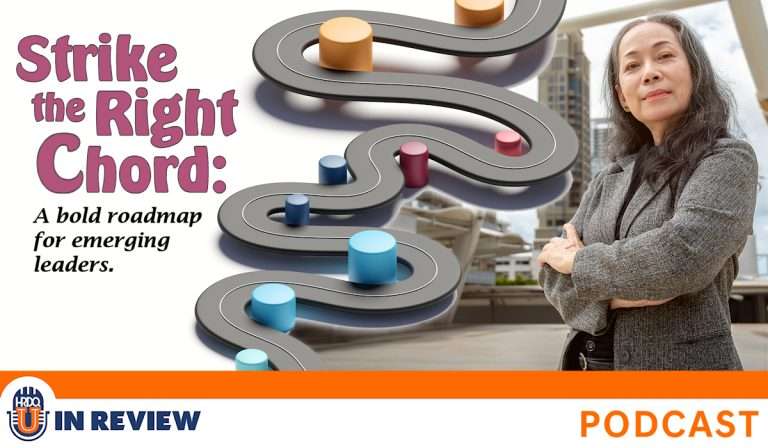
Listen to this podcast event at no charge with your
HRDQ-U Free Access Membership
Host Sarah welcomes leadership expert and musician Michael Brenner to explore the CHORDS Model™, a bold and innovative roadmap designed specifically for the emerging leader. Drawing inspiration from his background in music, Dr. Brenner brings a fresh, creative perspective to leadership development, demonstrating how musical principles like harmony and rhythm can offer powerful insights into team dynamics, communication, and organizational success.
Together, Sarah and Dr. Brenner dive into each element of the CHORDS Model™, uncovering how leaders can build stronger, more connected teams by learning to listen deeply, stay in sync, and lead with intention. Whether you’re an emerging leader or someone who supports leadership growth, this episode offers practical takeaways and a whole new way to think about leadership through the lens of music.
Chapters:
⏱️ 00:00 Introduction – Welcome to the HRDQ-U In-Review Podcast
⏱️ 00:47 Meet Michael Brenner – Musical roots, leadership expertise, and the birth of CHORDS
⏱️ 01:25 What Is the CHORDS Model™? – Breaking down the six notes: Communication, Harmony, Ownership, Respect, Direction, and Support
⏱️ 03:32 Context in Communication – How clarity and tone shift with the environment
⏱️ 05:00 Leadership in the Age of AI – Adapting human-centered leadership for a tech-driven world
⏱️ 07:14 Practical Applications for Leaders – Spotting a “team out of tune” and realigning effectively
⏱️ 09:20 Key Takeaways from the Webinar – Audience reactions and lessons learned
Action Items:
Watch the full webinar replay – Strike the Right CHORD: A Bold Roadmap for Emerging Leaders
Explore the CHORDS Model™ to enhance your leadership practice
Start small – Implement just one “note” this week in your leadership style
Share this episode with an emerging leader in your network
[ PODCAST PLAYBACK ]
You must be signed-in with your membership account to access this content.
Enjoyed this podcast? Have suggestions on how we can improve? Please take our quick survey and receive a coupon for 15% OFF any of our individual membership plans.
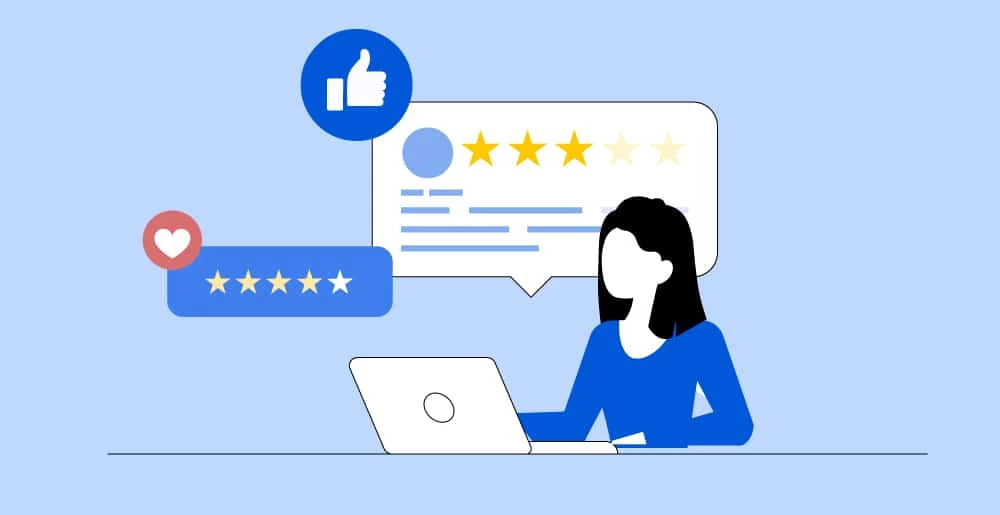
*Instant 15% coupon available upon completion of survey.
Want to learn more? Become an Individual or Corporate member to watch this and hundreds more webinars!
Learn about emerging leaders and how their unique skills contribute to sustainable success in today’s dynamic environment.
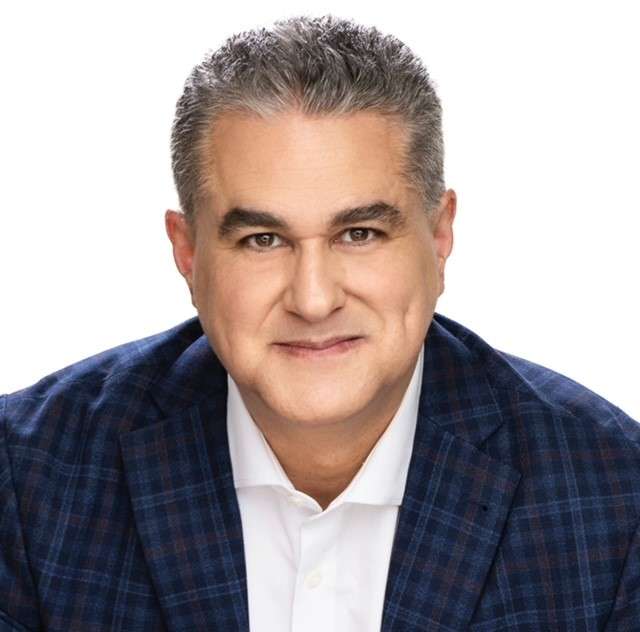
Michael Brenner
Michael Brenner, founder and CEO of Right Chord Leadership, helps leaders and teams at all levels enhance key skills for peak performance. With 25 years as a leadership consultant, executive coach, speaker, and educator, plus over 40 years as a professional musician, Michael’s unconventional workshops and coaching have led to improved employee engagement, reduced turnover, and more inclusive environments.
Michael created the CHORDS Model™ – Communication, Harmony, Ownership, Respect, Direction, and Support – which highlights essential “notes” for leadership and team success. He has worked with top organizations like law firm Ballard Spahr, QVC, Boeing, Children’s Hospital of Philadelphia, and the Federal Reserve Bank of Philadelphia, as well as not-for-profits like United Way and Habitat for Humanity.
A sought-after international speaker, Michael has presented in South Asia, Canada, and Australia. He holds a doctorate in Adult Learning and Leadership from Columbia University and a master’s in Adult and Organizational Development from Temple University. He has taught at Immaculata University, Temple University, and La Salle University and currently teaches at Penn State University and the Kogod School of Business at American University.
His new book, Strike the Right Chord: The Emerging Leader’s Guide to Exceptional Performance, was recently published.

Training Tools for Developing Great People Skills
This event is sponsored by HRDQ. For 45 years HRDQ has provided research-based, off-the-shelf soft-skills training resources for classroom, virtual, and online training. From assessments and workshops to experiential hands-on games, HRDQ helps organizations improve performance, increase job satisfaction, and more.

What's My Leadership Style
Unlock your leadership potential by recognizing how your influence impacts those around you. Build the confidence, guidance, and support essential for effective leadership. By identifying your strengths and addressing your weaknesses, you can develop into an exceptional leader.
Buy at HRDQstore.com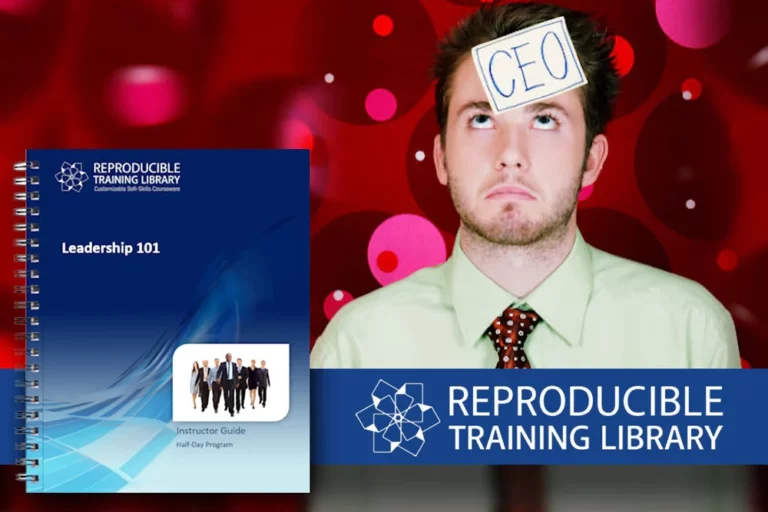
Leadership 101 Customizable Courseware
Equip both new and seasoned leaders with the crucial tools and techniques to sharpen their skills. They will discover ways to increase their effectiveness, make better decisions, and enhance employee and client retention.
Buy at HRDQstore.com
“The topic and content was relevant, specific and clear on how to grow in today’s workplace. Great work!”
Garrett W.
Safety and Loss Control Specialist
Goodwill of Central Iowa

“Excellent content and robust creativity in the way this topic was presented.”
Barbara S.
Executive Administrative Assistant I
University of Maryland Baltimore County

“The presenter shared in a way that was entertaining and full of great information.”
Dwayne R.
Program Manager
USDA
The HRDQ-U In Review Podcast, brought to you by HRDQU.com, brings you the latest insights and practical tools for enhancing soft-skills training in your organization. As a learning community for trainers, coaches, consultants, managers, and anyone passionate about performance improvement, we interview subject matter experts and thought leaders from recent webinars they presented with us to take a deeper dive into the content they shared and answer all your questions. Join us as we explore new ideas and industry trends, share success stories, and discuss challenges faced by professionals.
The HRDQ-U In Review Podcast is intended for HR and training professionals, organizational development practitioners, and anyone interested in improving workplace performance and productivity.
New episodes of HRDQ-U In Review are released every week.
The length of the episodes varies, but they typically range from 15-30 minutes.
The podcast covers a wide range of topics related to HR and organizational development, including leadership development, team building, communication skills, conflict resolution, employee engagement, and more.
No, HRDQ-U In Review is completely free to listen to.
You can listen to any available HRDQ-U In Review Podcast right on our website at HRDQU.com via our embedded Spotify player on the related webinar page. In addition to our self-hosted option, you can find the HRDQ-U In Review Podcast on many of the popular streaming services, which are listed above.